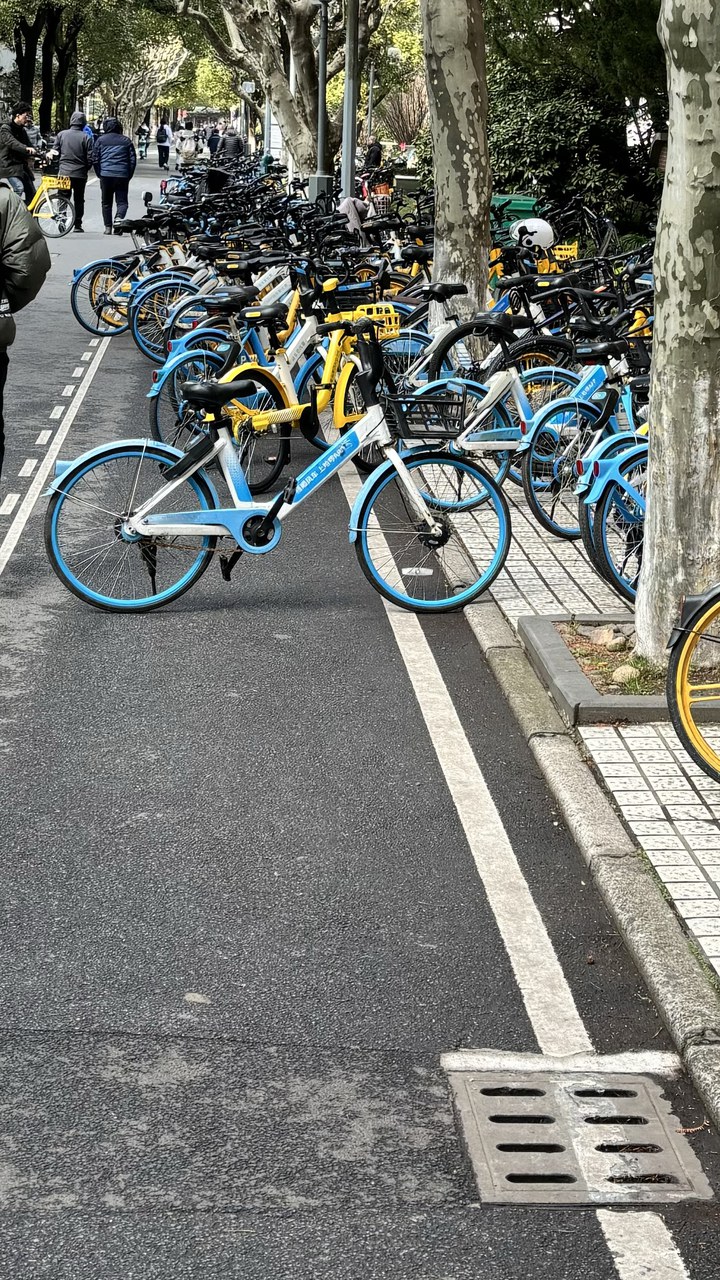CHINA - SHANGHAI
Shanghai is one of the largest metropolitan areas and definitely one of the most impressive in China. I have now spent almost a month in Shanghai and the most memorable thing was the infrastructure and development of the city.
In Europe, China is well known for its sea of bicycles and its crowded streets. But what is the myth? Is it really true? Yes, even today you can still find masses of bicycles and especially e-scooters, but there is also a very extensive network of bus and train connections. A maglev train with a speed of 400 km/h also runs from the airport to the city center and a subway network of 16 lines extends beyond the city limits. Short trips can be made for just 3 yuan - the equivalent of Fr. 0.30 or €39 - and the longest route costs 9 yuan - the equivalent of Fr. 1.11 or €1.15.
But the price is not what makes this metro so special. What is special is that you can reach any point in this metropolis of more than 6340 square kilometers in under 2 hours. However, 2 hours seems like a very long journey for most people. I have also noticed that being close to the university means a journey of just under half an hour to three quarters of an hour and therefore offers a clear contrast to the Principality of Liechtenstein. What I find very fascinating, however, is that even this half to three quarters of an hour can pass very quickly as you don't have the stress of having to worry about whether the train will arrive on time. this punctuality is quite fascinating for a German. However, the trains are not run-down or completely filthy, as you would expect. No, the trains are clean, modern, efficient and are my favorite form of everyday transportation. The streets are clean too.
Related to this issue are the dimensions and distances. Not only the way from home to the university is a lot longer and the distance is a lot greater than I am used to in Liechtenstein or Europe. But the campus itself is also a lot bigger than I am used to. It takes about half an hour to walk from one end of the campus to the other.
This university is almost the size of a small town, which is not only due to the size and diversity of the faculties, but also to the fact that the campus covers an area of around 100 hectares or 1 million m². But it's not just the size of the campus that is very impressive from a technical point of view; as I've already mentioned, I'm particularly interested in the infrastructure aspect, which is very impressive at this university.
Shanghai has a system called the 15-minute cycle. This means that everything you need in everyday life is within a 15-minute walking radius, which this campus has integrated very well. There are dormitories, hairdressers, cell phone repair stores, a swimming pool, a gym, sports fields, stores, cafeterias, several libraries and much more. This ensures that a regular student, when not exploring the city, can be on campus at any time of the day or night and can find a cafeteria, library, university building and shopping facilities for various needs within a 15-minute radius.
Nevertheless, most students use bicycles to cover these distances, which means that there are more bicycles in front of some university buildings, just as one would imagine in China according to prejudices.
At first glance, this seemed a bit daunting to me, as I hadn't expected such large distances or a campus half the size of Vaduz, but at second glance I find it quite fascinating how you can design this living space so concisely and yet not have a narrow feeling.
Nevertheless, the 15-minute concept is not entirely foreign to me, as this 15-minute concept is also possible in Liechtenstein. For example, we only have a 2-minute walk from the hall of residence to the university and another 15 minutes to the Holzmarkt mill, but in Liechtenstein this 15-minute concept applies to the entire district and not just the campus.
All in all, I am still very excited and look forward to seeing where the development goes next.
